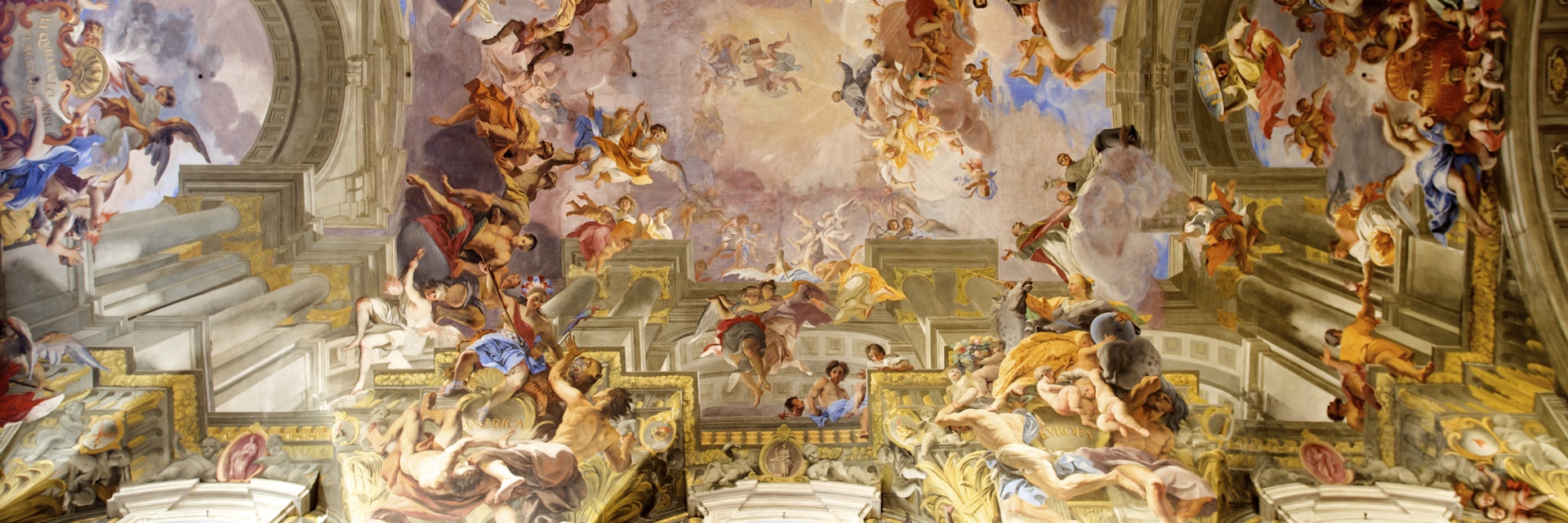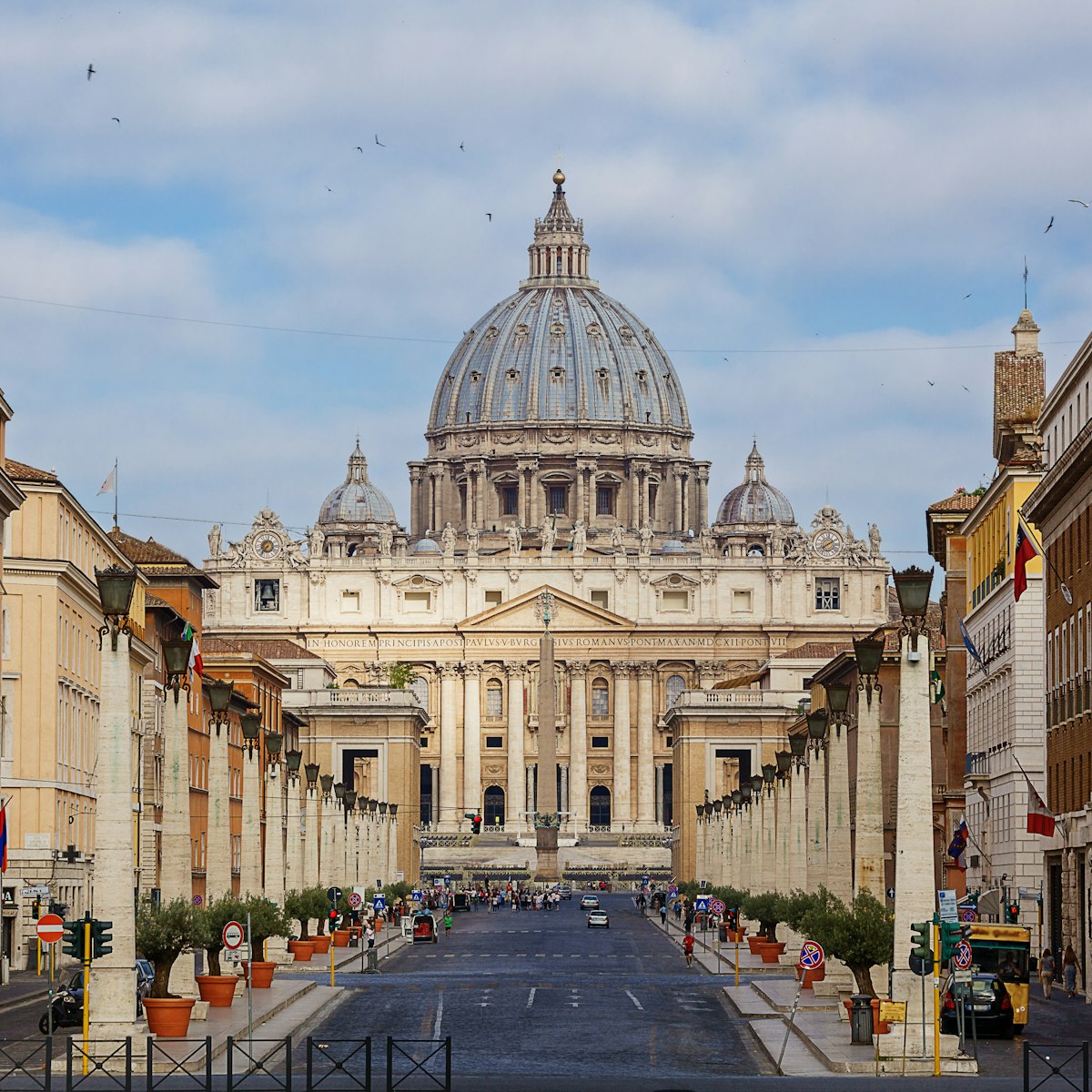Flanking a delightful rococo piazza, this important Jesuit church boasts a Carlo Maderno facade and two celebrated trompe l'œil frescoes by Andrea Pozzo (1642–1709). One cleverly depicts a fake dome, while the other, on the nave ceiling, shows Saint Ignatius Loyola being welcomed into paradise by Christ and the Madonna.
Rays of light are seen descending from the Saint and reflected by mirrors held by angels onto the Earth’s four known continents, positioned above the church’s simulated pillars.
For the best views of this dizzying work, stand on the small yellow spot on the nave floor and look up – alternatively, use the conveniently positioned mirror. Thanks to Pozzo's virtuoso use of perspective, a mass of figures, led by St Ignatius, appears to float heavenwards past a series of soaring columns and arches.
A second marble disc marks the best place to admire the dome, which is actually a flat canvas painted by Pozzo in 1685.
The church, which was built by the Jesuit architect Orazio Grassi in 1626, flanks Piazza di Sant’Ignazio Loyola, an exquisite square laid out in 1727 to resemble a stage set. Note the exits into "the wings" at the northern end and how the undulating surfaces create the illusion of a larger space.








